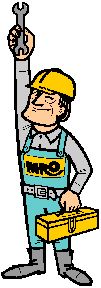
Operating motors in wet environments
Problem: Is there a way to extend the life of electric motors that are installed in damp or wet areas?Solution: Wet conditions often shorten the life of electric motors, as damp insulation will eventu...
September 1, 2001 | By MRO Magazine

Problem: Is there a way to extend the life of electric motors that are installed in damp or wet areas?
Solution: Wet conditions often shorten the life of electric motors, as damp insulation will eventually fail, but there are some things you can do to extend motor life.
First, a totally enclosed motor is the best solution, although it is more expensive than alternatives. However, if an open drip-proof motor already is installed, you should at least shield it from the moisture by building a shelter for the motor. Be sure not to diminish the air flow to or from the motor by doing so.
Also, check the orientation of the motor to see of the end louvres are deflecting water away from the inside of the motor, as intended. If not, rotate the housing so they will reduce the entry of precipitation and not aid its entry.
If you’re dealing with a totally enclosed, fan-cooled motor, make sure the weep holes at the bottom of the end housings are clear. Rotate the housing so that the holes are at the lowest point on the motor, if necessary, so any moisture can drain away easily.
The heat generated by continuously run motors will usually keep them dry. But a motor used intermittently can benefit from the use of auxiliary cartridge or silicon rubber strip heaters inside the motor, which would be operated when the motor is off. Since repeated heating and cooling cycles promote condensation, the warm air from the heaters prevents moisture from settling.
Another way to heat the motor is to use trickle heating, where a source of low-voltage, single-phase power is applied to the three-phase windings when the motor is at rest. This creates heat in the motor components.
The use of explosion-proof motors in wet environments is special challenge, because of the constraints dictated by their design. Some motors come with breather drain devices to allow moisture out while retaining the explosion-proof integrity. As with other designs, you can install heaters inside the motor, as well as shelter it from the environment while not restricting the air flow around it.
Finally, washdown or dirty duty motors are designed to prevent the entrance of moisture. Still, damp air can get inside, so the weep holes need to be kept clear and low, as with other motor designs.
Thanks for the information for this tip go to Ed Cowern, P.E., a former district manager for Baldor. Several of his technical articles are on www.motorsanddrives.com, under the heading The Cowern Papers. They are recommended reading as they are based on what he has learned working with electric motors since the early 1970s.
Do you have a solution for a maintenance problem? Send it in and if it’s published, we’ll send you a free Mr. O Problem Solver T-shirt and $35.00. Include your address and telephone number, print complete details, and add an illustration to help explain your tip. Send your ideas to Mr. O, Machinery & Equipment MRO, 1450 Don Mills Rd., Don Mills, Ont. M3B 2X7.
